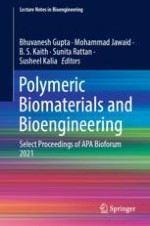This book presents select proceedings of the APA Bioforum International e-Conference on Polymeric Biomaterials & Bioengineering (APA Bioforum 2021). This book mainly focuses on developing innovative polymeric materials for bioengineering and human healthcare systems. This book helps in the understanding of molecular architecture and its role in governing physical characteristics which is extremely useful to understand the interactions with the biosystem. The topics covered include polymer synthesis, biopolymers, biomaterials, smart materials, nanotechnology, tissue engineering, wound care system, hydrogel, targeted drug delivery, water decontamination and purification. The book will be a valuable reference for beginners, researchers and professionals interested in polymeric materials and biomaterials.
